Art & Exhibitions
15 Must-See Shows This Fall in Europe, From a Major Survey of Marina Abramović to a Face Off Between Edvard Munch and Goya
Here's a carefully selected round-up of what you can look forward to.
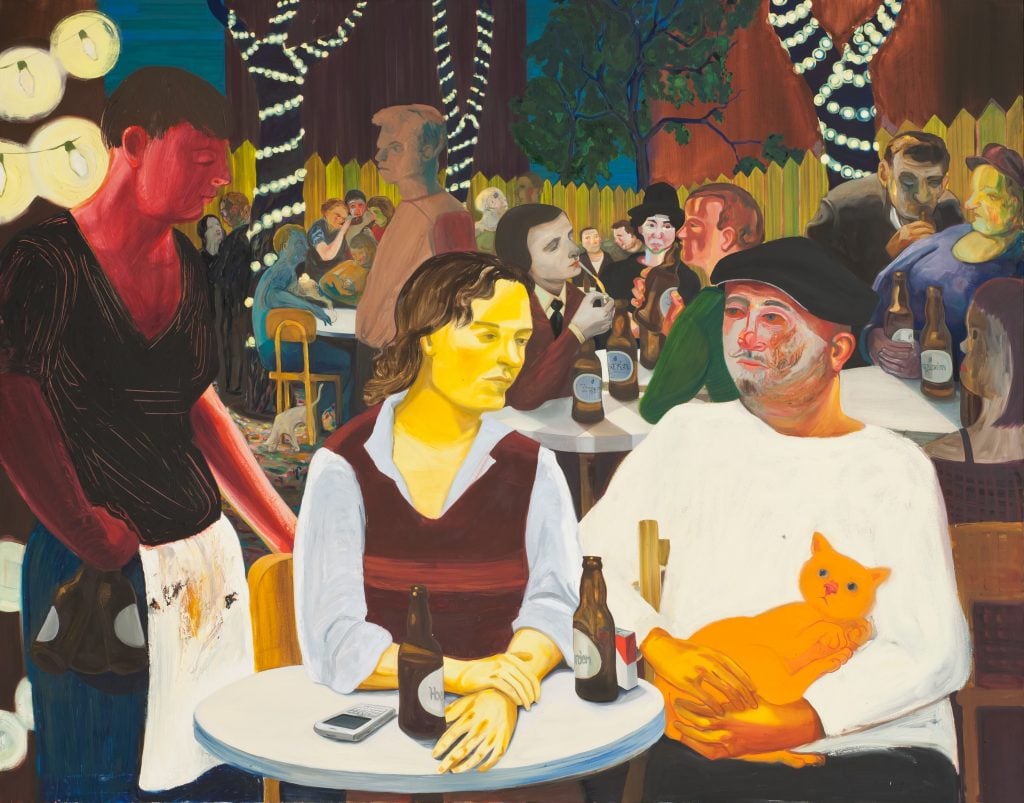
Here's a carefully selected round-up of what you can look forward to.

Artnet News

Museums are going big this fall, likely out of eagerness to get claw back some of the footfall they lost during the pandemic. From dazzling and sprawling solo exhibitions to two-person shows juxtaposing the contemporary with the pre-modern, nearly every major hub in Europe seems to be bringing forth headline-making and thought-provoking blockbusters.
And we are here for it—our European team hand-picked what they are most excited to see this season.
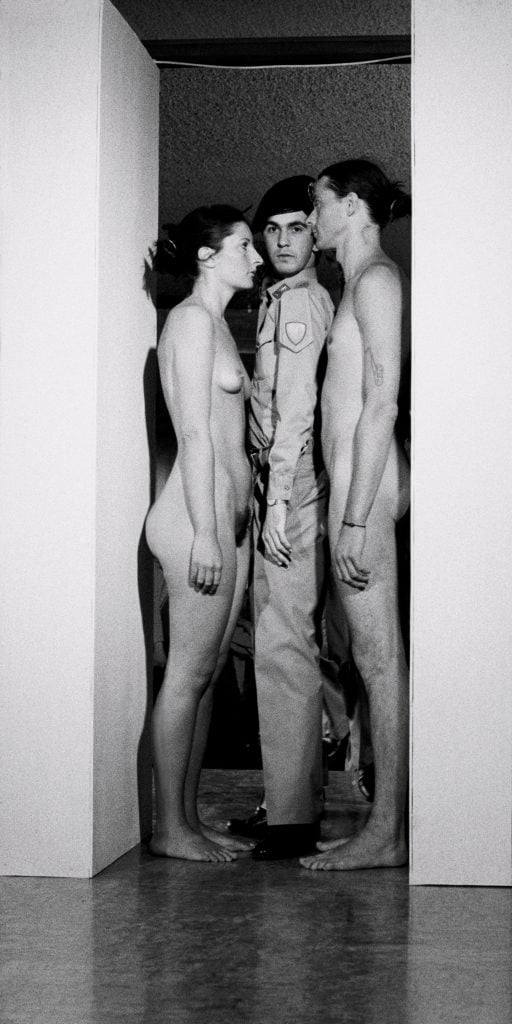
Ulay/ Marina Abramović, Imponderabilia (1977). Performance; 90 minutes. Galleria Communale d’Arte Moderna, Bologna. Courtesy of the Marina Abramović Archives. ©Ulay / Marina Abramović.
Waiting for this show—which is also, shamefully, the first solo show by a woman in the Royal Academy’s main galleries—has been something of a durational performance itself, since it was delayed multiple times (it was originally slated to run in 2020). But there’s a lot to get excited about in a show that promises to cover five decades of the 76-year-old performance artist’s career.
The self-titled exhibition will chronicle highlights from her gruelling performances, during which she pushed her physical and mental limits, pioneering the medium. Due to some recent health problems—she suffered an embolism—Abramović herself will be unable to take part in any live performances, but some key works will be re-performed by artists trained in the Marina Abramović method. On view will be the joint piece she made with Ulay, called Imponderabilia, where visitors will be invited to squeeze through a doorway formed by two naked performers; another performer will live in the gallery for 12 days to recreate The House with the Ocean View. —Naomi Rea
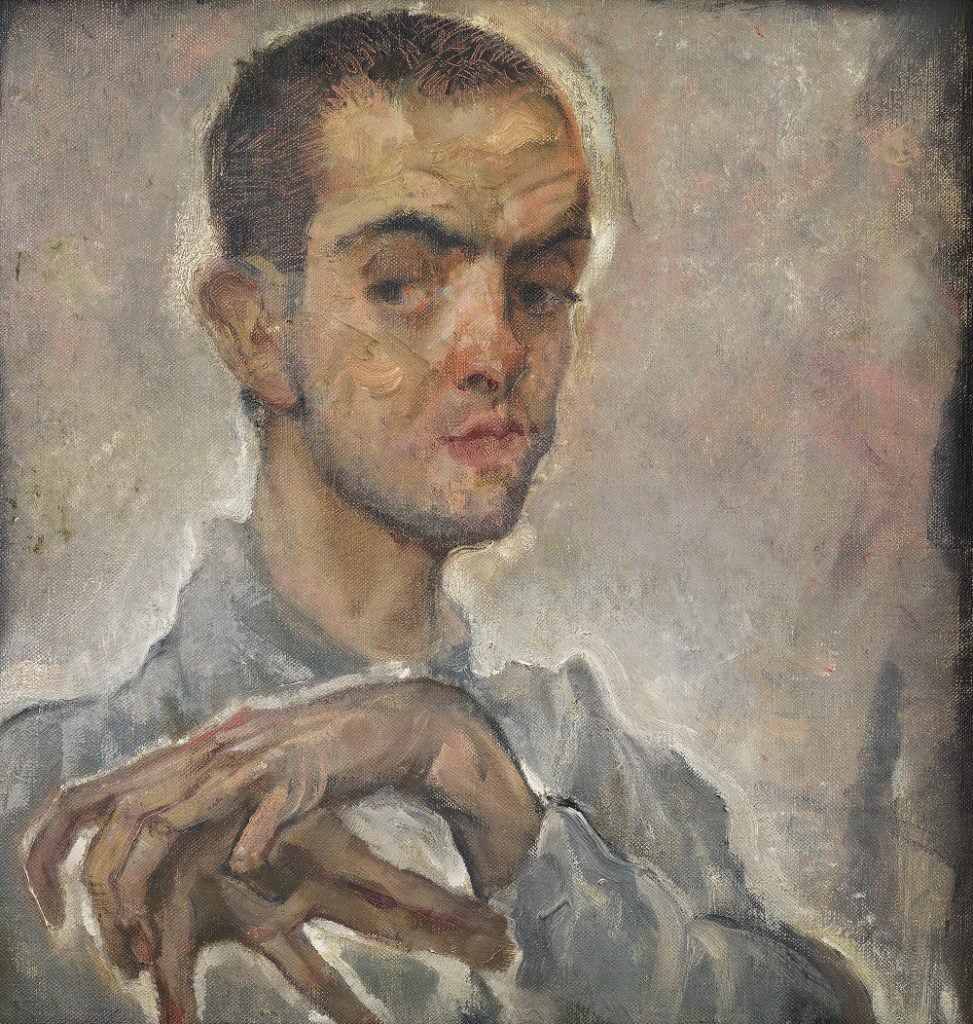
Max Oppenheimer, Portrait of Egon Schiele (1910). Photo courtesy of Leopold Museum.
A close friend of Egon Schiele, though Max Oppenheimer’s reputation has dwindled today he was once a pivotal member of the Austrian avant-garde before he made his mark in Berlin. The influence of Cubism is evident in early works like The Scourging (1913), with its murky palette and writhing mass of naked bodies, while later works like The Chess Match (1925/30) capture the mood of the legendary Romanisches Café, a meeting place for artists and intellectuals in the German capital. —Jo Lawson-Tancred
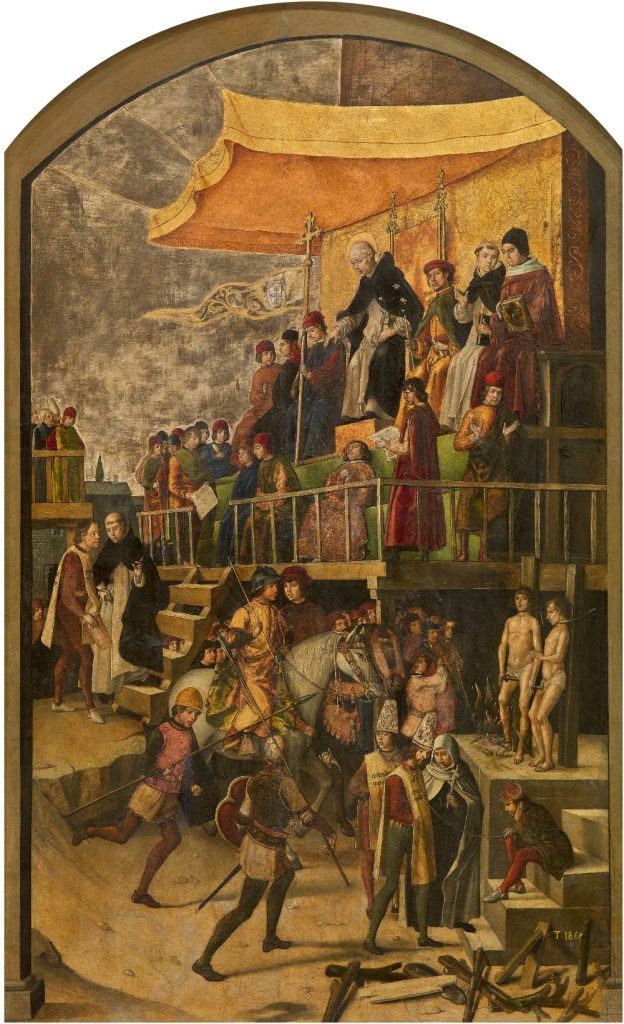
Pedro Berruguete, Saint Dominic presiding over an Auto-da-fe (1491–1499). Image courtesy of Prado Museum.
There is a fascinating canon of art that helps us understand how Jewish identity was preserved and also persecuted in the Middle Ages. Through historical paintings spanning the 13th to 15th centuries, this exhibition will delve into the history of how antisemitism was often justified, how different religious beliefs were promoted, and how Christianity was pressured onto the masses, including during the Spanish Inquisition that began in 1478.—Jo Lawson-Tancred
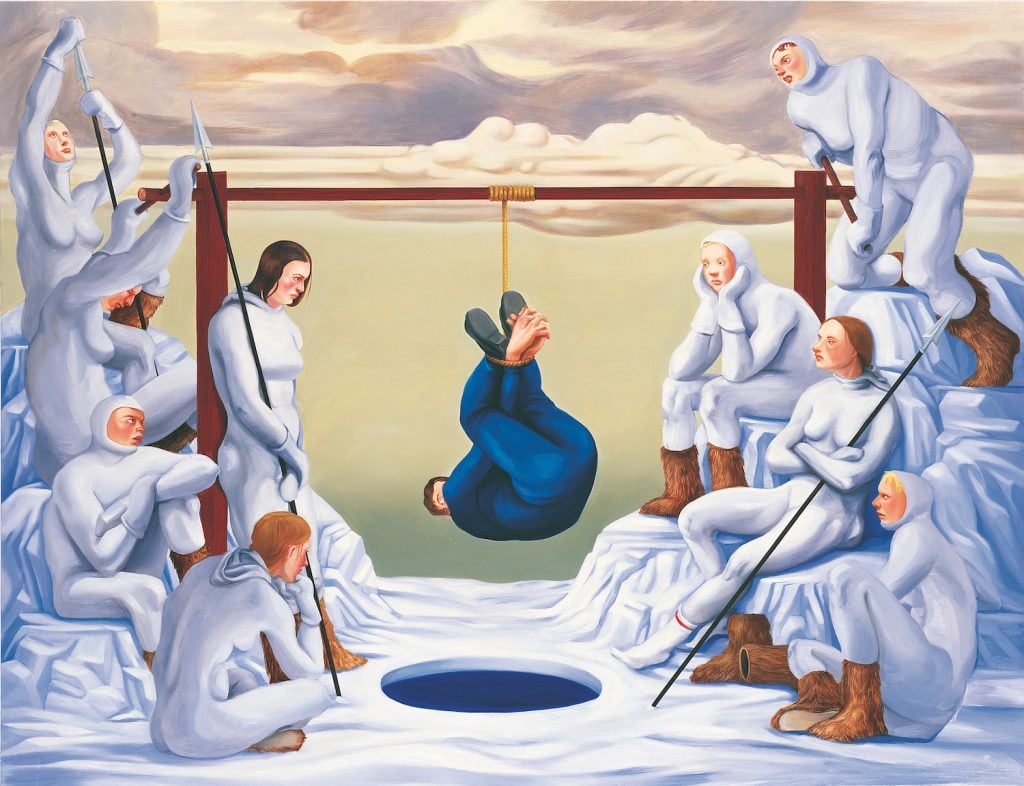
Nicole Eisenman Fishing (2000). Collection Craig Robins, Miami. Image courtesy Carnegie Museum of Art. Photo: Bryan Conley
I had the chance to see this exhibition at its first stop at the Museum Brandhorst in Munich earlier this year, and there I was floored by the scope of topics and the range of emotions that Nicole Eisenman wades into within the space of one canvas. And that is not to mention the scale of many her paintings, some of which are so big and so populated by characters that they recall the biblical intensity of da Vinci’s The Last Supper or the societal dramas captured by Rembrandt in The Night Watch. The artist takes these references from painting history—which is in many instances problematically white, straight, and male—and transgresses their formalities by bringing in urgent themes, including gender, queer sexuality, and social alienation. “What Happened” is an overdue survey for European audiences, and it includes 100 artworks spanning her three-decade career. —Kate Brown
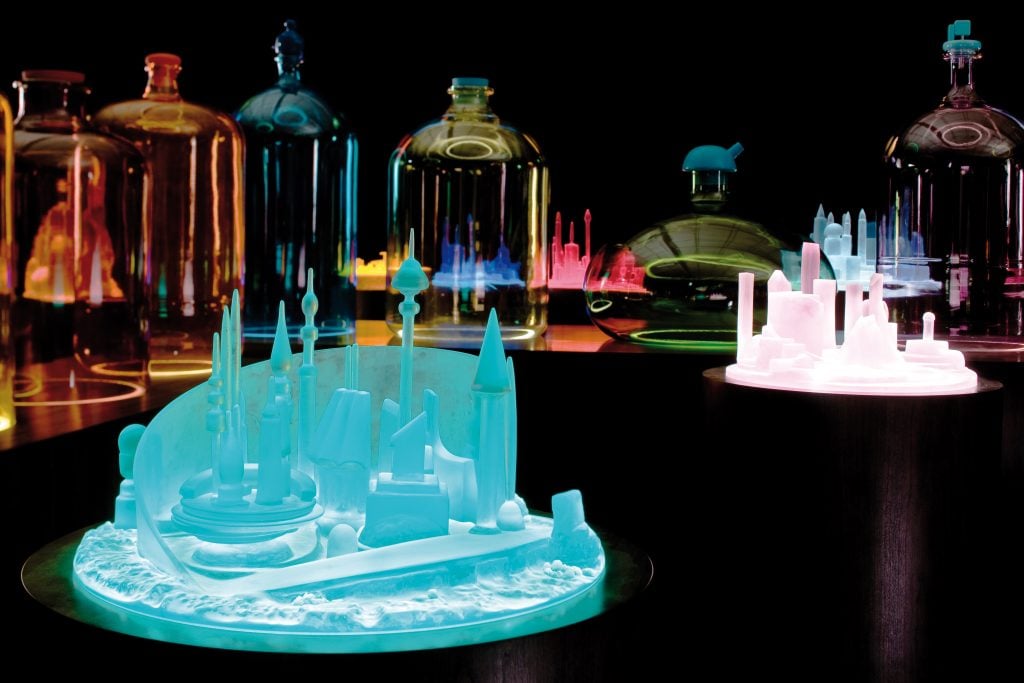
Mike Kelley, Kandors Full Set (détail), (2005-2009). Photo : Fredrik Nilsen. Pinault Collection. © Mike Kelley Foundation for the Arts. Tous droits réservés. © Adagp, Paris, 2023.
A comprehensive exhibition will never be able to fully capture an artist as unbound by strictures as Mike Kelley, whose work is immensely complex and void of easy punchlines. With the Pinault Collection, though, I think we will get as close an attempt as any. The show brings together many of Kelley’s most important works and will touch on all the aspects of his ouevre, from his pop-infused sculptures to his enigmatic performance. The Paris institution’s coveted October slot goes to the late conceptual artist and my wager is that it will be the talk of the city this fall, but then throughout Europe. Lucky for us, this show is traveling afterwards to several preeminent including the Tate Modern, London, the K21 in Düsseldorf, and the Moderna Museet in Stockholm. —Kate Brown
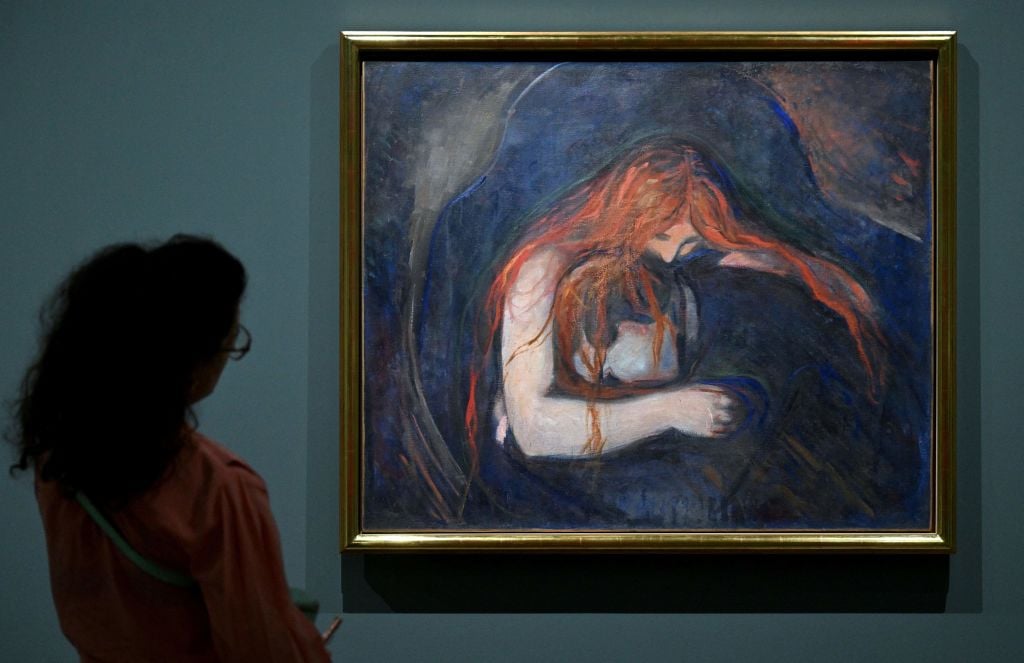
Edvard Munch, Vampire at the “Edvard Munch. A Poem of Life, Love and Death” exhibition at the Musee d’Orsay in Paris on September 15, 2022. Photo by EMMANUEL DUNAND/AFP via Getty Images.
Though Goya and Munch could never have met, the Spanish Old master’s international reputation grew after his death, around the same time that the young Norwegian modern artist was seeking out inspiration. Focusing on the themes of war, society, faith, and superstition, this exhibitions reminds us why both artists are still remembered for their boldly fantastical visions and darkly mysterious imaginations. —Jo Lawson-Tancred
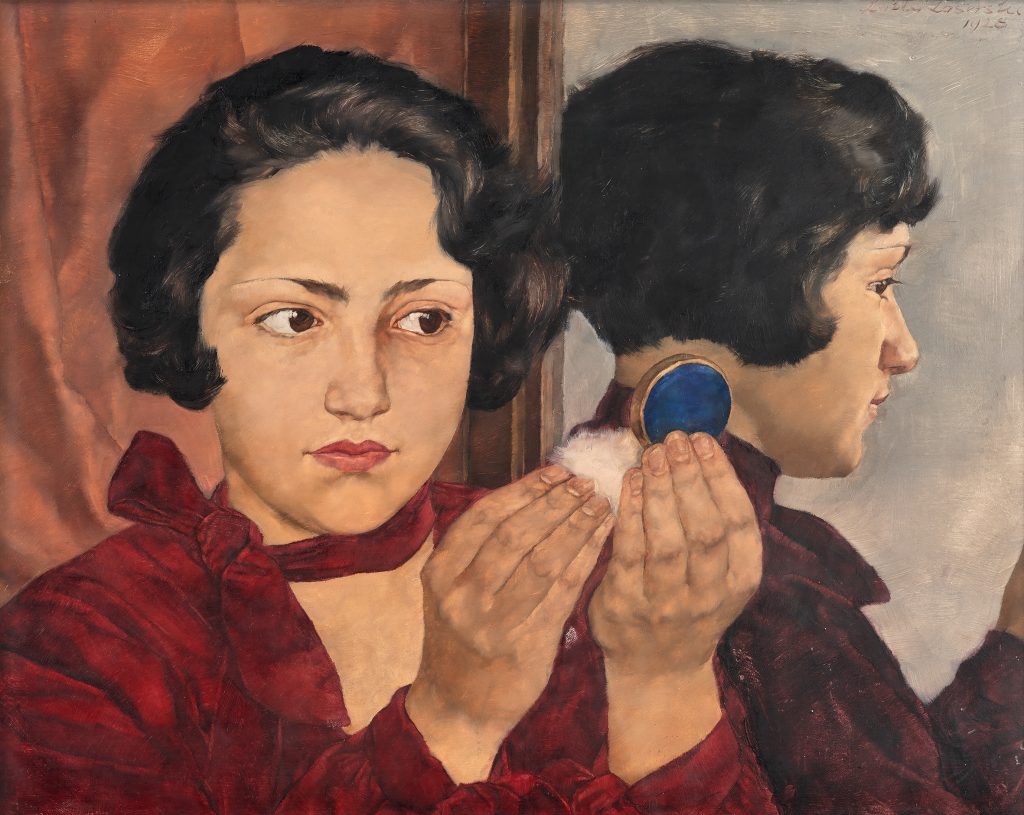
Lotte Laserstein, Russian Girl with Compact, (1928). Photo: Albin Dahlström/Moderna Museet. ©Lotte Laserstein
When I saw Evening over Potsdam, painted in 1930 on the outskirts of Berlin, which now hangs at the Neue Nationalgalerie in the German capital, I was reminded of the power painting can have. The picture, showing a group of friends sitting in silence, transcends language, capturing the deep anxiety that must have been felt by Jews and political opponents as Nazism was on the rise. Not long after making this work, Laserstein, who was Jewish, would flee Berlin to Sweden and she would spend the rest of her life in exile. She fell into relative obscurity, and the art world is just now rediscovering her as a key voice among the many that were snuffed out in the outbreak of World War 2.
A new show planned for the Moderna Museet in Malmö and, later, in Stockholm, will consider the output she had in the two European countries, when war, in Laserstein’s words “broke [her] life in two.” Structured in two parts between her Berlin Weimar era years and life in Sweden, one will find in her honest portraits a transgressive and empowering commentary on womanhood, identity, and queerness. My hope is that a German institution will bring this urgent exhibition to Berlin. —Kate Brown
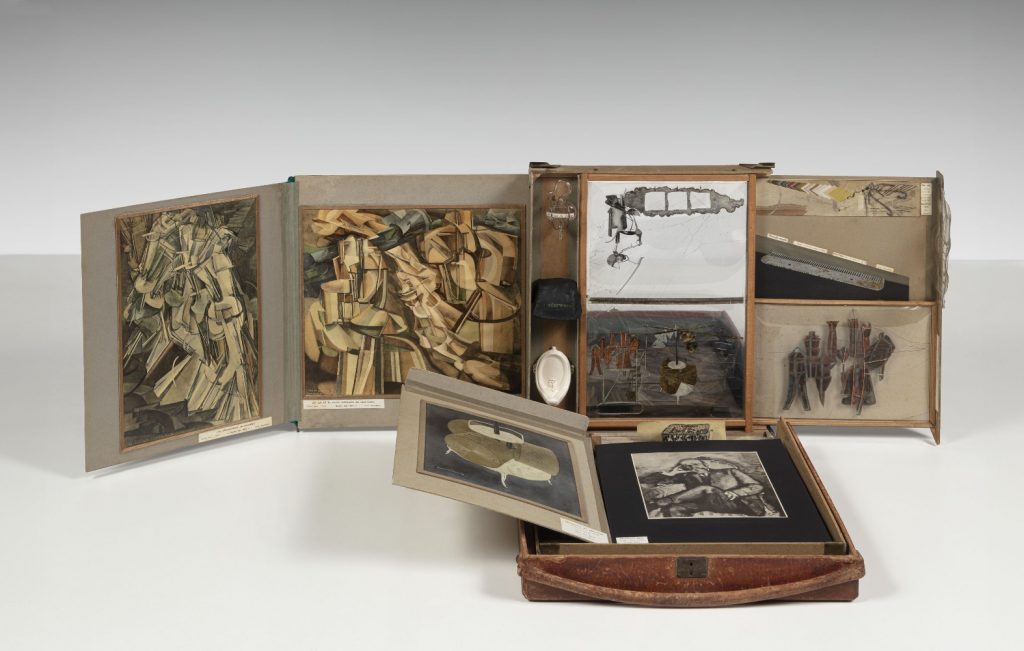
Marcel Duchamp, From or by Marcel Duchamp or Rrose Sélavy (Box in a Valise) (1935–41). Photo courtesy of Peggy Guggenheim Collection.
This large-scale exhibition evidences Duchamp’s mastery in the art of reproduction and self-quotation. But it is also particularly special because it is the first that institution has done for an artist who was a dear friend and unofficial advisor of Peggy Guggenheim. After the two met in 1923, he introduced her to the many artists in his circle in Paris and offered advice when she established her first London gallery Guggenheim Jeune. The show includes some of Duchamp’s most famous Cubist-inspired paintings and found objects from museums across Europe and America are being reunited with lesser-known pieces from private collections, including, most notably, thirty works owned by the Venetian art collector Attilio Codognato. —Jo Lawson-Tancred
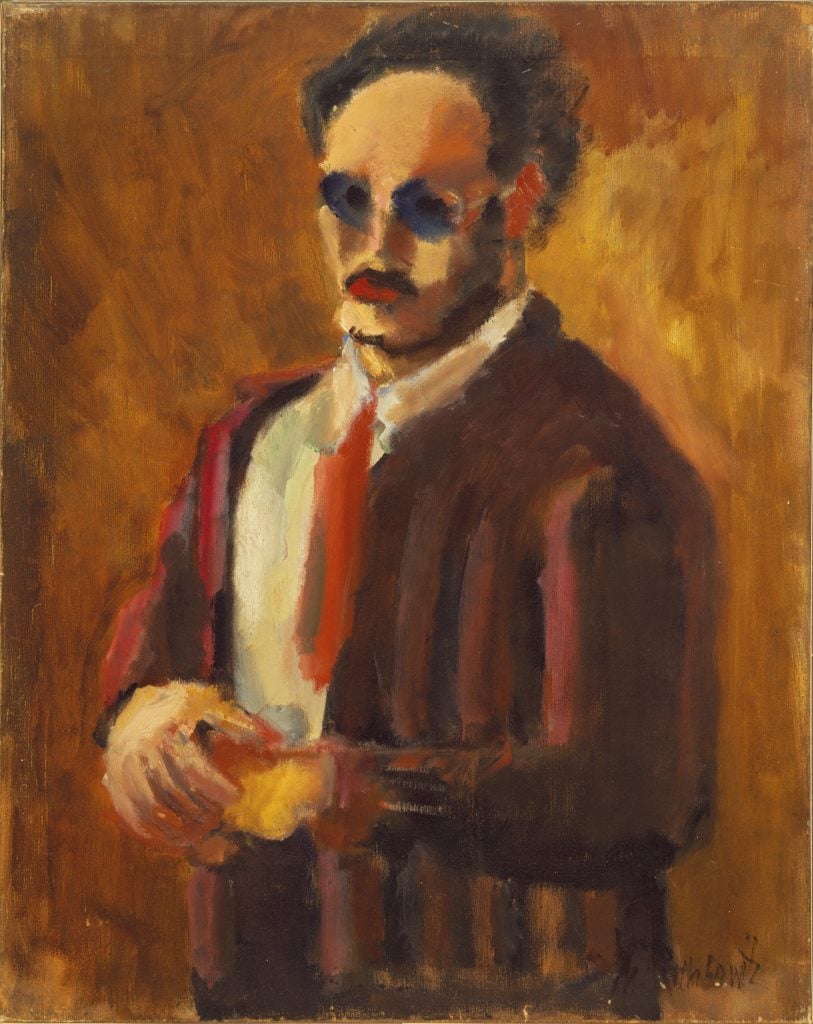
Mark Rothko, Self-Portrait (1936). CR82. Collection Christopher Rothko. ©1998 Kate Rothko Prizel & Christopher Rothko – Adagp, Paris, 2023.
Coinciding with an influx of international visitors to Paris for the Paris+ fair, the Fondation Louis Vuitton is dedicating its vast galleries to a celebration of Mark Rothko. Rothko hasn’t actually had a retrospective in France since 1999, and this exhibition promises an impressive overview packed with prime examples of of his sublime and quasi-spiritual paintings.
The institution knows how—and certainly has the means—to put on a great show, always securing impressive loans and this one is no exception, having borrowed the entirety of Tate’s Rothko Toom among the 115 works included in the show.
The exhibition will be organized chronologically, from Rothko’s early-career figuration to the abstract expressionistic canvases for which he is famous. I’m a big fan of the latter, but particularly curious to see the early works, which include New York subway scenes and other urban landscapes, as well as this rare 1936 self-portrait inspired after viewing a Rembrandt self-portrait at the National Gallery of Art, loaned from his son Christopher’s private collection. —Naomi Rea
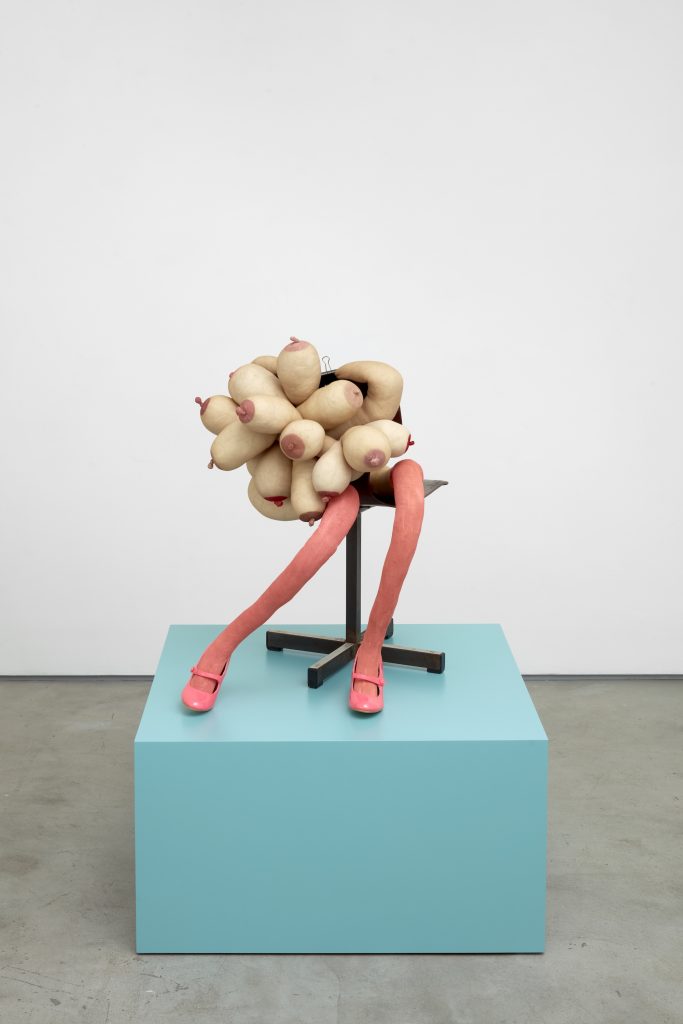
Sarah Lucas, SUGAR (2020). Courtesy the artist and Sadie Coles HQ, London. ©Sarah Lucas.
Tate’s forthcoming survey of Sarah Lucas, which will bring together more than 75 works spanning the heterogenous four-decade career of the irreverent, feminist artist, is sure to be a fall highlight for the London art scene. Lucas is homegrown and she emerged alongside the YBAs in the 1990s but, like many of them, has a practice that extends well beyond that initial sensationalist grouping.
I’m expecting to laugh, cry, and feel my own humanity in all its grungy fragility in a way that only Sarah Lucas knows how to trigger. The show promises soft and hard sculptures, legs, boobs, and a whole load of chairs, as well as ten new works that revisit old themes and evince, loudly, that Lucas is still pushing boundaries well into her career.—Naomi Rea
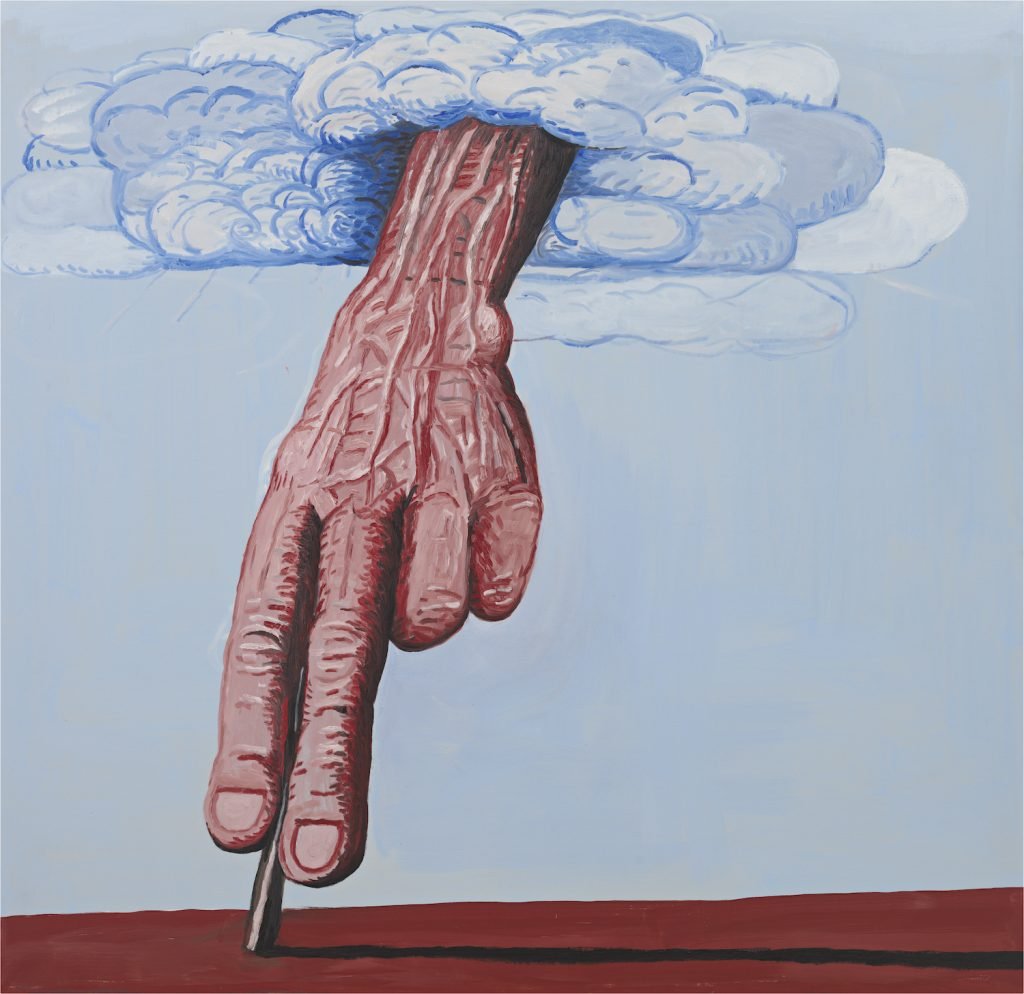
Philip Guston, The Line (1978). Promised gift of Musa Guston Mayer to The Metropolitan Museum of
Art, New York © The Estate of Philip Guston, courtesy Hauser & Wirth.
The highly anticipated retrospective of Philip Guston, which was controversially delayed, is finally making its U.K. stop and will be the first of its kind in the U.K. in nearly two decades. It features more than 100 paintings and drawings charting the 50-year artistic trajectory of one of the most celebrated artists of the 20th century, charting different periods of his career; the show includes early political work at a young age to a subsequent switch into abstraction and then figuration. Key works on show will include a projection of protest mural The Struggle Against Terrorism (1934-35), Passage (1957-58) and other works from his first major retrospective at the Guggenheim in 1962, and Sleeping (1977). —Vivienne Chow
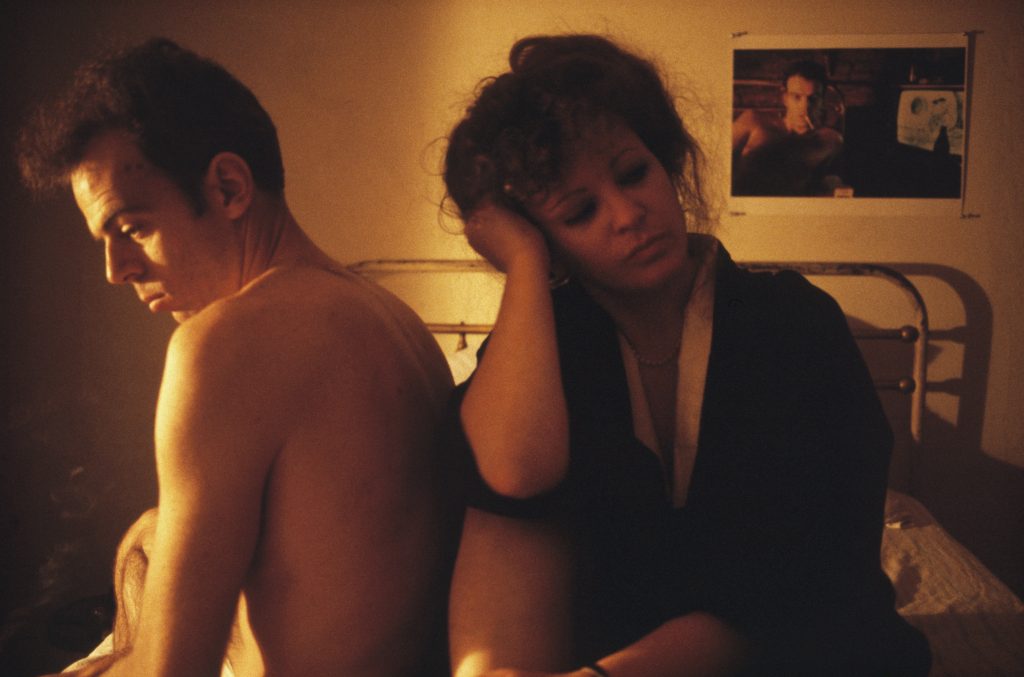
Nan Goldin, Brian and Nan in Kimono (1983). ©Nan Goldin.
OG fans of Goldin and those who just learned of her when watching the Oscar-nominated biopic, All the Beauty and the Bloodshed, are in for an extraordinary exhibition in Amsterdam, on tour after debuting in Stockholm. Best known for her raw photographs, this show treats Goldin more accurately as a filmmaker, giving pride of place to six of her slideshow films collated together from her still images, which she began projecting to live audiences in clubs and underground movie theaters in the 1980s. Goldin’s work has a way of tearing the viewer apart, while offering a cathartic and empowering experience that encourages them to embrace freedom within their own lives.
Her magnum opus, the continually changing The Ballad of Sexual Dependency (1981–2022) now comprises more than a thousand still images capturing Goldin’s circle of friends over the years, through intimate and violent episodes and seductive dances with the ecstatic, the ugly, and the fatal sides of sex and drugs. It will be joined by her homage to her trans and drag queen friends The Other Side (1992– 2021), and four other works which grapple with different elements of her life, from family trauma and suicide, to her own lifelong battle with addiction and withdrawal. —Naomi Rea
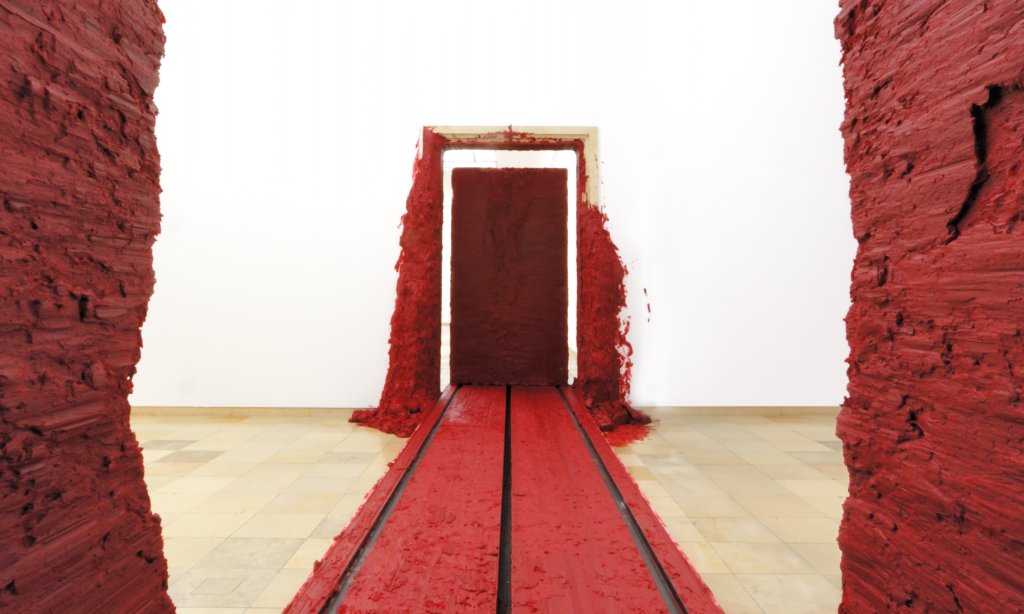
‘Anish Kapoor: Untrue Unreal.’ Courtesy of Fondazione Palazzo Strozzi.
Anish Kapoor is the starry headline of Florence Art Week, which runs from September 28 to October 8. On view in the historic Palazzo Strozzi will be a career-spanning show that confronts view with Kapoor’s installations and sculpture that verge on being optical illusions, a testament to the artist’s masterful way of working with bold materials. Appropriately called “Untrue Unreal.” the show will feature a large-scale in the museum’s extraorindary Renaissance courtyard. —Vivienne Chow
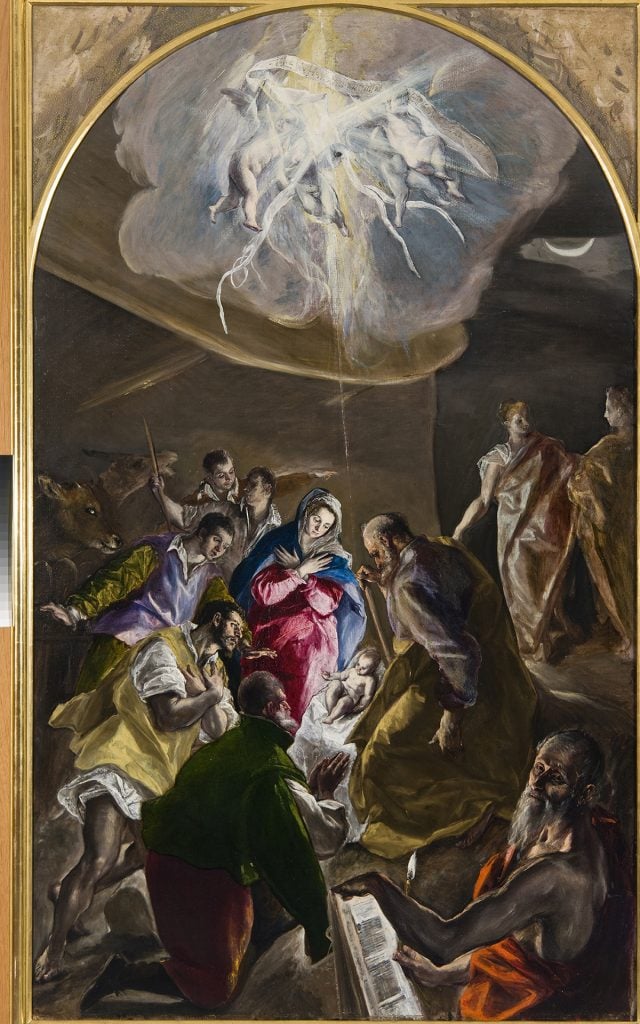
El Greco, Adoración de los Pastores (1577-1579)
What could be in common between Domḗnikos Theotokópoulos, the Greek painter, sculptor, and architect of the Spanish Renaissance better known as El Greco, and Tino Sehgal, the Berlin-based Golden Lion-winning artist best known for the performances that he defined as “constructed situations”?
Centro Botin may have an answer. The historical and contemporary artist are going head-to-head; on view will be a new live work by Seghal titled This youiiyou, created in response to El Greco’s intriguing masterpiece Adoration of the Shepherds (1577-1579). But it is more than a dialogue between the two; it is about creating something new. Viewers will “witness what becomes real-life situation of bonding, caring, and loving,” according to the exhibition’s curator Udo Kittelmann. —Vivienne Chow

Lee Ufan, Relatum – Mirror Road 2016/2023, Spiegel, Steine, Kiesel © Lee Ufan / VG Bild-Kunst, Bonn 2023. Photo: Shu Nakagawa.
For decades, the Korean-born master Lee Ufan has captivated the art world with his unique, minimalist aesthetics embodied in his diverse oeuvre that ranges from paintings to sculptures. In this exhibition, billed as the first comprehensive retrospective of the artist in Germany, will be 50 key works created over the past five decades. The exhibition will feature some of the artist’s most iconic works, including sculptures that juxtapose manmade objects and raw materials from nature, as well as his monochrome and abstract paintings that played an instrumental role in Korea’s Dansaekhwa movement. Lee’s sculpture, Relatum – The Mirror Road (2016/2023), will be installed as an artistic intervention engaging in a dialogue with Rembrandt’s 1634 masterpiece Self-Portrait with Velvet Beret, which will be on view, a major loan from the nearby Berlin Gemäldegalerie.
–Vivienne Chow
More Trending Stories:
Price Check! Here’s What Sold—and For How Much—at Frieze Seoul 2023